When it comes to shipping goods across the United States, efficiency, accessibility, and infrastructure are paramount. Whether it’s by land, sea, or air, having well-connected cities is crucial for businesses aiming to move products swiftly and reliably. Here, we present the top 10 cities in the US for shipping, based on their transportation infrastructure, volume of freight, and strategic location.
1. New York City
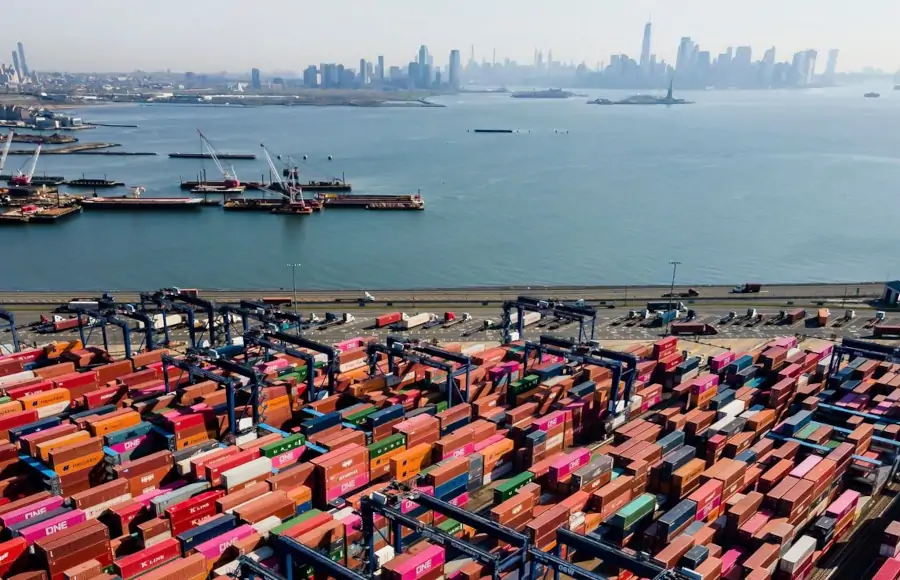
Topping the list is the bustling metropolis of New York City. With its extensive network of highways and the Port of New York and New Jersey, it’s no surprise that NYC consistently ranks first in truck freight volume. The city’s strategic location on the eastern seaboard also makes it a vital gateway for international trade.
New York City stands as the epitome of a global economic powerhouse, and its role in the shipping industry is no exception. The city’s strategic location along the eastern seaboard of the United States positions it as a vital gateway for both domestic and international trade. At the heart of New York City’s shipping prowess lies the Port of New York and New Jersey. The largest port on the East Coast and the third-largest port in the United States by container volume.
The Port of New York and New Jersey handles a vast array of goods. Including containerized cargo, automobiles, bulk cargo, and even cruise passengers. Its extensive facilities and efficient operations make it a preferred choice for businesses looking to move goods into and out of the United States. The port’s proximity to major population centers in the northeastern United States further enhances its appeal. Allowing for quick and convenient distribution of goods to a large consumer base.
One of the key factors contributing to New York City’s dominance in the shipping industry is its extensive network of highways and transportation infrastructure. The city is crisscrossed by major interstate highways. Such as I-95, I-78, and I-80, facilitating the movement of goods by truck throughout the region and beyond. Additionally, New York City’s robust rail network provides further connectivity. With freight railroads serving the port and connecting it to markets across the country.
2. Houston
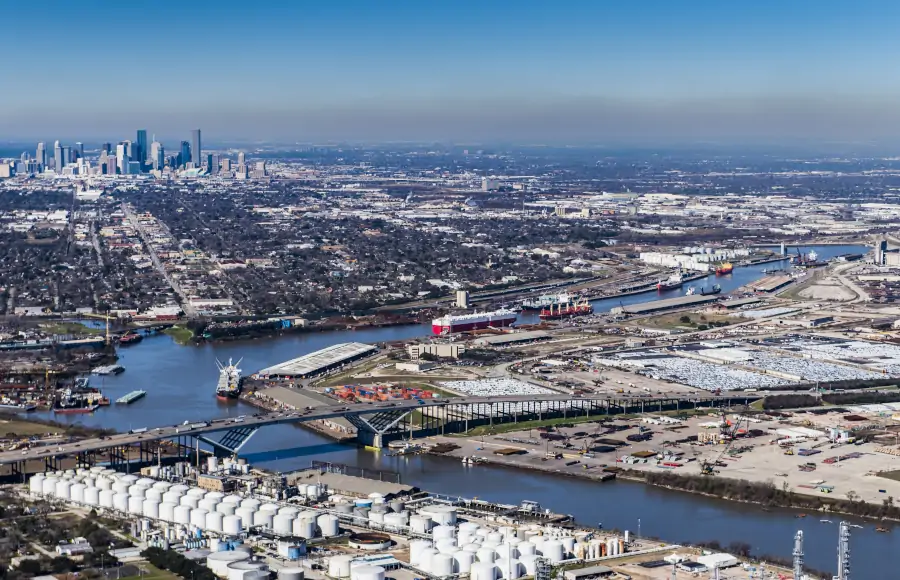
Houston, renowned as the energy capital of the world, showcases the Port of Houston, a bustling ocean gateway that ranks among America’s busiest. Bolstering its shipping credentials, the George Bush Intercontinental Airport efficiently manages significant volumes of foreign trade and cargo.
Houston’s status as the energy epicenter stems not only from its abundant oil and gas reservoirs but also from its strategic positioning and robust transportation infrastructure, positioning it as a pivotal shipping hub. Central to this prowess is the Port of Houston, a critical maritime trade artery in the United States.
Handling a diverse array of cargo, including containerized goods, bulk commodities, and petroleum products, the Port of Houston stands as one of the nation’s most crucial ports. Nestled along the Houston Ship Channel, spanning over 50 miles and linking the port to the Gulf of Mexico, its deep-water terminals accommodate some of the world’s largest vessels, facilitating efficient and economical shipping operations.
An advantageous feature of the Port of Houston is its strategic location, granting access to both domestic and international markets. Serving as a vital link in global supply chains, it connects U.S. businesses to markets across the Americas, Europe, and beyond. Its proximity to major population centers and industrial hubs in the southern and central United States further enhances its allure, providing businesses with convenient access to a vast consumer base.
Complementing its maritime prowess, the George Bush Intercontinental Airport, one of the nation’s busiest, serves as a major air cargo hub. Its extensive cargo facilities adeptly manage foreign trade and cargo, consolidating Houston’s stature as a significant player in the shipping industry.
3. Minneapolis

Despite its inland location, Minneapolis is swiftly developing its infrastructure to establish itself as a significant player in the shipping industry. Positioned on the northernmost point of the Mississippi River System, the Port of Minneapolis acts as a pivotal hub for transporting goods to and from the Midwest.
Leveraging its strategic location and investing in infrastructure, Minneapolis is bolstering its shipping capabilities. The Port of Minneapolis, although lacking the maritime prominence of coastal ports, capitalizes on its location along the Mississippi River System to access a vast network of inland waterways, connecting the city to key markets across the central United States.
An essential advantage of the Port of Minneapolis is its accessibility to barges and other waterborne vessels, offering a cost-effective and eco-friendly mode of transportation for bulk cargo. The port’s facilities cater to various cargo types. Including agricultural products, construction materials, and industrial goods, rendering it a versatile and dependable shipping hub for regional businesses.
In recent years, Minneapolis has embarked on expanding and modernizing its transportation infrastructure to augment its shipping capabilities. Initiatives aimed at enhancing navigation along the Mississippi River, upgrading port facilities, and improving intermodal connections underscore Minneapolis’s emergence as a significant player in inland shipping.
Moreover, Minneapolis’s burgeoning economy and vibrant business community contribute to its increasing prominence in the shipping sector. The city’s diverse industrial base, spanning manufacturing, agriculture, and technology sectors, fuels substantial demand for shipping services, propelling the growth of logistics and transportation enterprises in the area.
4. Dallas
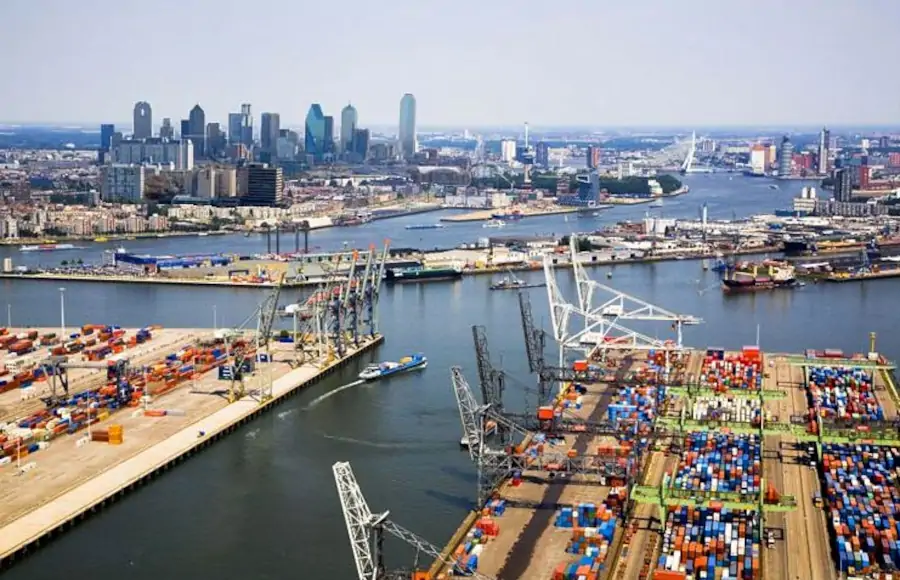
With its extensive transportation options, including air, road, and rail, Dallas is a bustling shipping hub in the heart of Texas. Its robust logistics presence and well-developed infrastructure make it a prime location for businesses looking to move goods efficiently.
Dallas, located in the heart of Texas, stands as a bustling shipping hub with a strategic advantage due to its extensive transportation options and well-developed infrastructure. As one of the largest metropolitan areas in the United States. Dallas benefits from its central location within the country, making it an ideal distribution center for goods moving across the nation.
One of the key factors contributing to Dallas’s prominence in the shipping industry is its exceptional connectivity. The city boasts a comprehensive transportation network, including major highways, railroads, and airports, providing businesses with multiple options for moving goods efficiently and cost-effectively.
Moreover, Dallas benefits from its proximity to major ports on the Gulf Coast. Such as the Port of Houston and the Port of Corpus Christi, providing businesses with access to international shipping routes via sea. This connectivity to maritime ports further enhances Dallas’s role as a vital link in the global supply chain.
In addition to its transportation infrastructure, Dallas boasts a robust logistics industry. With a multitude of warehousing, distribution, and fulfillment centers serving businesses of all sizes. The city’s favorable business climate, coupled with its skilled workforce and pro-business policies. Attracts companies seeking efficient shipping solutions and supply chain management services.
Furthermore, Dallas’s diverse economy and thriving business community contribute to its status as a premier shipping hub. The city is home to a wide range of industries, including technology, manufacturing, healthcare, and retail. Generating significant demand for shipping and logistics services.
5. Kansas City
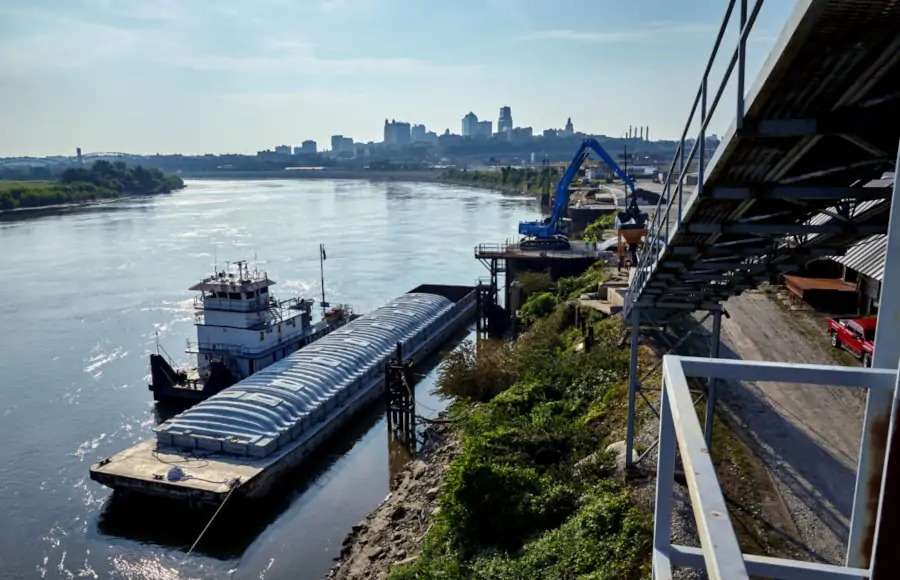
Kansas City, situated at the geographic center of the United States. Serves as a vital transportation hub with a strategic advantage due to its diverse and efficient transportation options. The city’s central location and access to America’s freight rail system make it an attractive choice for businesses seeking reliable and cost-effective shipping solutions.
One of the key factors contributing to Kansas City’s prominence in the shipping industry is its extensive rail infrastructure. The city is a major hub for freight railroads, with several Class I railroads, including Union Pacific, BNSF Railway, and Kansas City Southern Railway, operating in the region. These railroads connect Kansas City to major markets across the country. Providing businesses with access to an extensive network of rail transportation routes.
In addition to its transportation infrastructure, Kansas City boasts a strong logistics industry, with a multitude of warehousing, distribution, and fulfillment centers serving businesses of all sizes. The city’s favorable business climate, affordable cost of living, and skilled workforce. Make it an attractive location for companies looking to establish or expand their shipping operations.
Moreover, Kansas City’s diverse economy and thriving business community contribute to its status as a premier shipping hub. The city is home to a wide range of industries, including manufacturing, agriculture, healthcare, and technology, generating significant demand for shipping and logistics services.
6. St. Louis
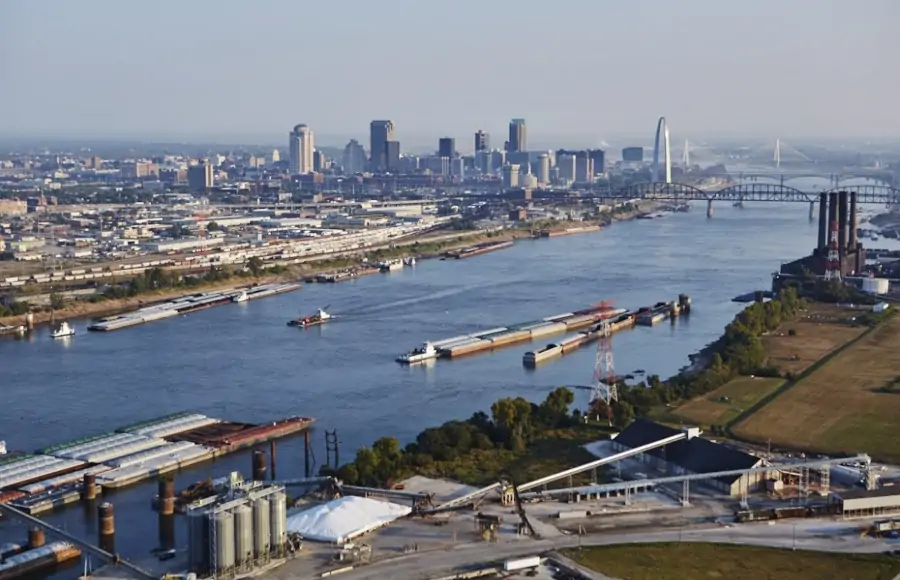
St. Louis, located on the western bank of the Mississippi River, is a key transportation hub in the central United States, boasting access to four major modes of transportation – air, rail, road, and water. This unparalleled connectivity has established St. Louis as a crucial link in the nation’s transportation network. Providing businesses with seamless access to local, national, and international markets.
One of St. Louis’s greatest assets is its access to water transportation via the Mississippi River. The river serves as a vital artery for commerce, allowing for the efficient movement of goods to and from the region. St. Louis benefits from its strategic location along the river. With several ports and terminals facilitating the handling of bulk commodities, agricultural products, and other goods. The city’s riverfront infrastructure supports barge traffic, making it an integral part of the nation’s inland waterway system.
In addition to water transportation, St. Louis is well-connected by rail, with several major railroads. Including Union Pacific, Norfolk Southern, and BNSF Railway, serving the region. These railroads provide businesses with access to a comprehensive network of rail transportation routes. Connecting St. Louis to markets across the country and beyond. The city’s rail infrastructure supports the movement of various commodities, including coal, grain, chemicals, and manufactured goods.
7. Chicago
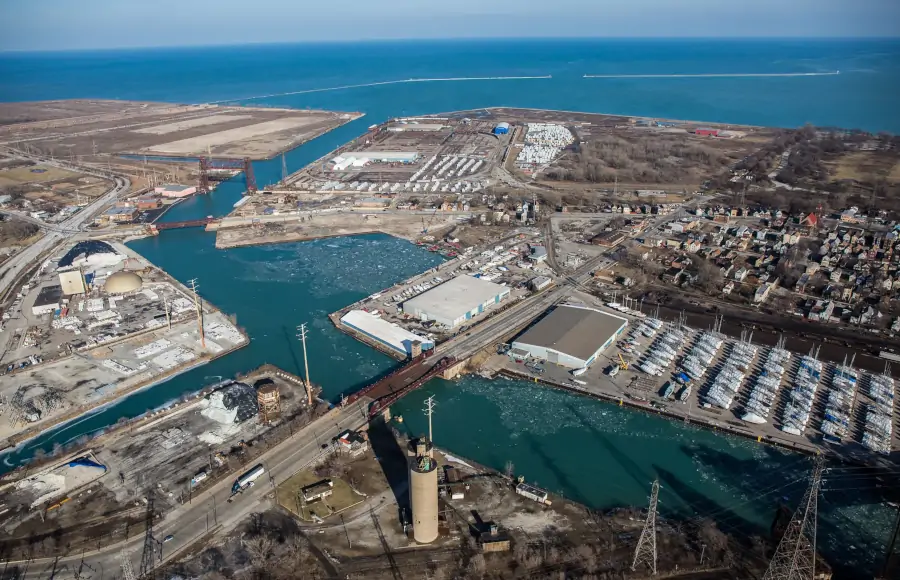
Chicago, often referred to as the “Gateway to the West,” is a critical transportation hub in the United States, boasting a strategic location and unparalleled connectivity to various modes of transportation. Situated on the shores of Lake Michigan and intersected by several major waterways. Including the Chicago River and Calumet River, Chicago serves as a crucial hub for shipping and commerce.
One of Chicago’s greatest assets is its access to water transportation via Lake Michigan and its connected waterways. The city’s location along the Great Lakes-St. Lawrence Seaway System provides businesses with access to a vast network of maritime routes. Connecting Chicago to ports across the Great Lakes, the St. Lawrence River, and the Atlantic Ocean. Chicago’s bustling port facilities handle a wide range of cargo. Including bulk commodities, containerized goods, and petroleum products, making it a key player in the nation’s maritime trade.
Moreover, Chicago is home to O’Hare International Airport (ORD), one of the busiest airports in the world and a major cargo thoroughfare. With its modern cargo facilities and extensive air freight services, O’Hare serves as a gateway for global air cargo operations. Connecting Chicago to markets across the United States and around the world. The airport’s strategic location and connectivity to global air routes make it an attractive choice for companies looking to expedite their shipping operations and reach international markets efficiently.
In addition to its water and air transportation capabilities, Chicago is intersected by several major interstate highways. Including Interstate 90, Interstate 94, and Interstate 55, making it easily accessible by road. The city’s extensive highway network facilitates the movement of goods by truck throughout the region and beyond. Providing businesses with efficient and reliable transportation options for distributing goods to and from Chicago.
8. Cleveland
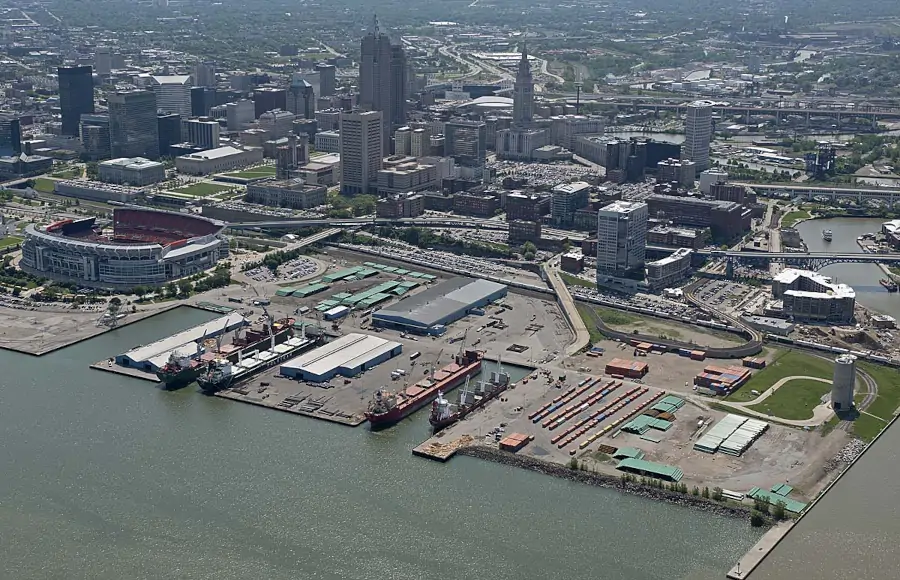
With multiple airports and harbors, including the Cleveland Hopkins Airport and Burke Lakefront Airport, Cleveland offers businesses easy access to shipping options. Its strategic location on the Great Lakes further enhances its shipping capabilities.
Cleveland, situated on the southern shore of Lake Erie, is a key transportation hub in the Great Lakes region. Boasting multiple airports and harbors that provide businesses with easy access to shipping options. The city’s strategic location on the Great Lakes, combined with its well-developed infrastructure. Makes it an attractive choice for companies looking to move goods efficiently and reliably.
One of Cleveland’s greatest assets is its access to water transportation via Lake Erie and the Great Lakes-St. Lawrence Seaway System. The city’s port facilities, including the Port of Cleveland, handle a wide range of cargo. Including bulk commodities, containerized goods, and project cargo. Cleveland’s location on Lake Erie provides businesses with direct access to the St. Lawrence Seaway. Connecting them to markets across the Great Lakes, the St. Lawrence River, and the Atlantic Ocean. This strategic maritime gateway positions Cleveland as a vital link in the global supply chain. Facilitating the movement of goods to and from the region.
In addition to its water and air transportation capabilities, Cleveland benefits from its extensive highway and rail networks. Which provide businesses with multiple options for moving goods to and from the region. The city is intersected by several major interstate highways, including Interstate 90 and Interstate 71. Facilitating the movement of goods by truck throughout the region and beyond. Cleveland’s central location within the Great Lakes region makes it an ideal distribution center for goods moving east-west and north-south.
9. Boston

Boston, one of the oldest cities in the United States, has transformed into a vital logistics hub on the East Coast due to its strategic location. Well-developed infrastructure, and access to major waterways. At its core lies the Port of Boston, alongside other nearby ports, collectively serving as crucial gateways for maritime trade and commerce.
Managed by the Massachusetts Port Authority (Massport), the Port of Boston plays a pivotal role in the region’s transportation network. Situated on the shores of Boston Harbor, it efficiently handles diverse cargo, including containerized goods, automobiles, bulk commodities, and cruise passengers. Its modern facilities attract businesses seeking import and export opportunities in the northeastern United States.
Boston’s access to major waterways like the Atlantic Ocean and the Gulf of Maine grants businesses direct access to international shipping routes. The port’s deep-water terminals accommodate large vessels worldwide, establishing Boston as a vital link in the global supply chain. Its proximity to major population centers in the northeastern United States further enhances its appeal as a distribution center, offering convenient access to a vast consumer market.
Furthermore, Boston’s strategic location positions it as a trade gateway with Europe, the Caribbean, and other international markets. Its well-connected transportation network, including highways, railroads, and airports, enhances its role as a logistics hub. Providing businesses with various options for moving goods to and from the region.
Apart from the Port of Boston, the city hosts several other ports and terminals. Such as the Conley Container Terminal and the Boston Autoport, specializing in containerized cargo and automobile imports and exports, respectively. These facilities complement the Port of Boston’s operations, contributing to the city’s esteemed status as a key logistics hub.
10. San Francisco

San Francisco, located on the picturesque shores of the San Francisco Bay, is a dynamic economic and transportation hub on the West Coast of the United States. Central to its shipping capabilities is the Port of Oakland. Situated just across the bay, serving as a vital gateway for goods moving to and from Asia.
Managed by the Port of Oakland Commission, the Port of Oakland is among the busiest container ports in the US and a major hub for international trade. Its modern facilities handle a diverse range of cargo, including containerized goods, automobiles, agricultural products, and bulk commodities. The port’s strategic location near major population centers and industrial hubs in the western United States positions it as an ideal distribution center for goods in the region.
Furthermore, the Port of Oakland plays a crucial role in trade with Asia. Especially China and other Pacific Rim countries, thanks to its proximity to major shipping lanes and extensive maritime routes. Its rail and highway connections seamlessly link to inland distribution centers and markets across the country.
San Francisco’s thriving business community, diverse economy, and innovative culture contribute to its status as a premier shipping hub. With skilled workers, top universities, and a supportive environment for industries like technology, finance, healthcare, and logistics. The city attracts businesses worldwide. This vibrant ecosystem drives demand for shipping and transportation services, fostering economic growth in the region.
In conclusion, these top 10 cities showcase the dynamic nature of the US shipping industry. From bustling metropolises to inland hubs, each city offers unique advantages for efficient and reliable transportation of goods. As global trade evolves, these cities will continue to lead the nation’s shipping infrastructure.